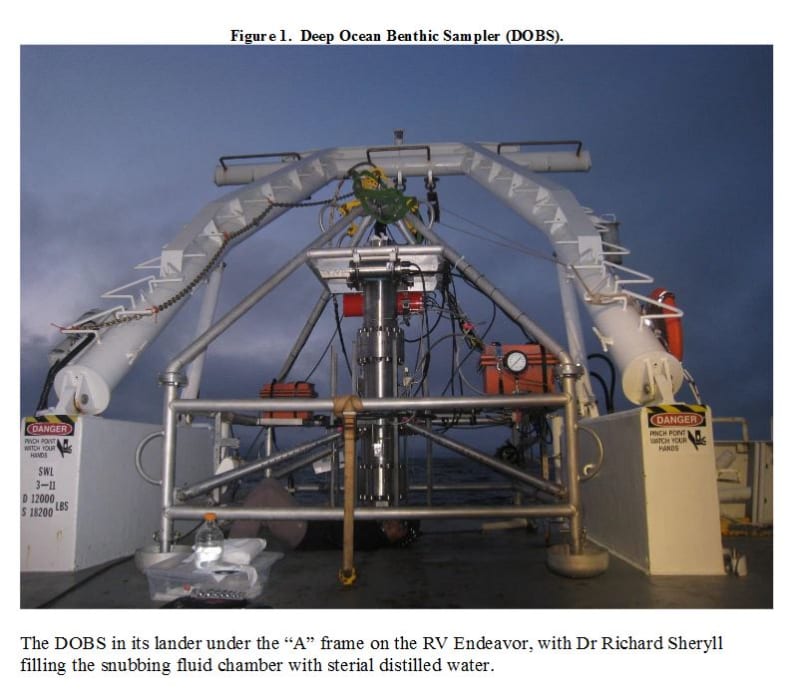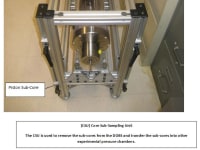
Deep Ocean Benthic Sampler (DOBS) possesses a unique capability to the fields of deep sea microbial ecology and natural products biotechnology: the ability to obtain a contamination-free benthic boundary layer sediment core samples and preserve in situ conditions of pressure and temperature upon retrieval to the ship. In addition a method of sub-sampling the main core without change of pressure of temperature. The sub sample can be transferred and frozen for mRNA, rRNA analysis or made into a slurry and pumped into a hyperbraic isolation culture chamber (ICC) for further research. These samples can then be pumped into a chemostat for continued growth.(The Chemostat & ICC are not part of my equipment; they belong to Woods Hole Oceanographic Institution.) DOBS is a working prototype for full ocean depth sampling. It can be modified and used as a long term deployment deep ocean observatory.
DOBS will allow access to the microbes from these deep sea environments by being able to preserve in situ conditions, enabling their cultivation and thus the application of genomic and postgenomic techniques. These microbes may represent a rich reservoir of so far untapped biodiversity with obvious implications for bioprospecting. In addition, DOBS will provide extremely useful in sampling gas- and gas-hydrate bearing sediments. By maintaining in situ conditions the distribution and activity of microbes can be directly correlated with the concentration of volatile und unstable compounds, such as gas hydrates, providing novel insights into the microbial biogeochemistry of these habitats. Gaining a better understanding into the role that microbes play in affecting hydrate stability and dissolution is of great relevance. Finally, the technology behind DOBS will be made available to the scientific community by Cyclops Research and Development, Inc.
DOBS consists of two separable pressure chambers (see figures -- Upper Chamber, Lower Chamber), that are pressure sealed end-to-end and each pre-charged with pressurized gas. The lower chamber is sealed by a Rotating Door (RD) that interfaces with a small Snubbing Fluid Chamber (SFC) that is pre-filled with an essentially non-compressible snubbing fluid that is separated from the external environment by an internally sterile Trap Door (Figure 2B). Collectively, these chambers operate to create a sterile and controllable gas/fluid interface allowing for consistent, reliable and non-contaminating sample acquisition. The upper Motion Control Vessel (MCV) contains motion control components for actuating the sediment coring operations and the lower Sample Vessel (SV) houses the actual coring apparatus. Both chambers are pre-pressurized with helium to pressures slightly greater than that of the deep-sea environment the sample is to be obtained at. The MCV contains two motors, one controls the opening and closing of the RD. The other motor controls the vertical movement of the Sample Acquisition Device (SAD) probe, which obtains the sediment core. The motor is attached through gearing to an acme screw, which drives the SAD probe in and out of the sample chamber to acquire the sediment cores.
The material from the DOBS will be used for industrially enzymes and natural products discovery of bio-pharmaceuticals.
-
Awards
-
 2013 Top 100 Entries
2013 Top 100 Entries
Like this entry?
-
About the Entrant
- Name:Richard Sheryll
- Type of entry:individual
- Software used for this entry:SolidWorks
- Patent status:patented








